The Estate Refreshed
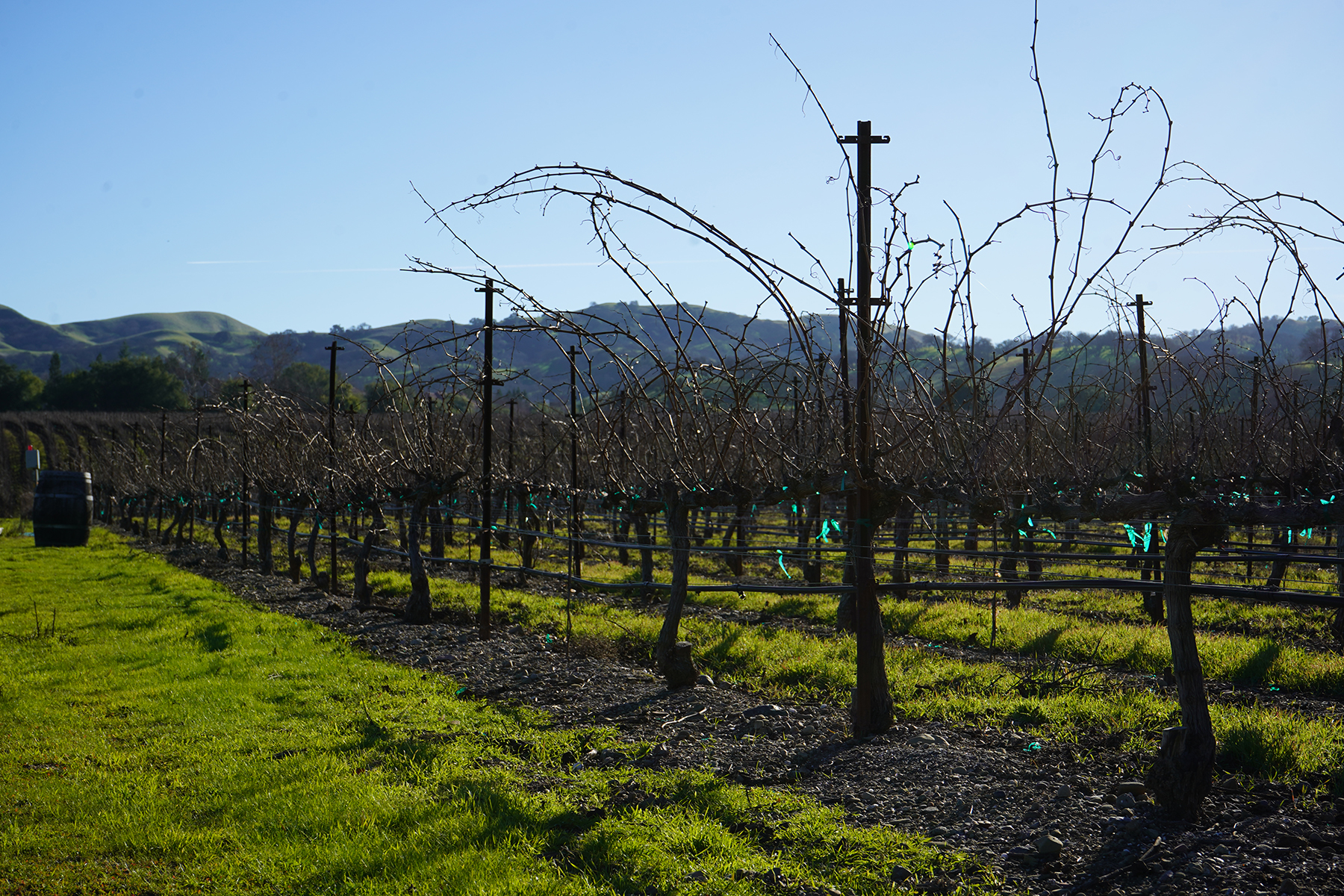
We were blessed with a few days of drenching rain, which saturates our gravelly soil with much needed nutrition and refreshes the earth around the estate. Though it’s still January, the sunshine that has followed our stormy days has an intoxicating promise of spring. Keep scrolling to join us on a photo tour of the estate vineyard this week.
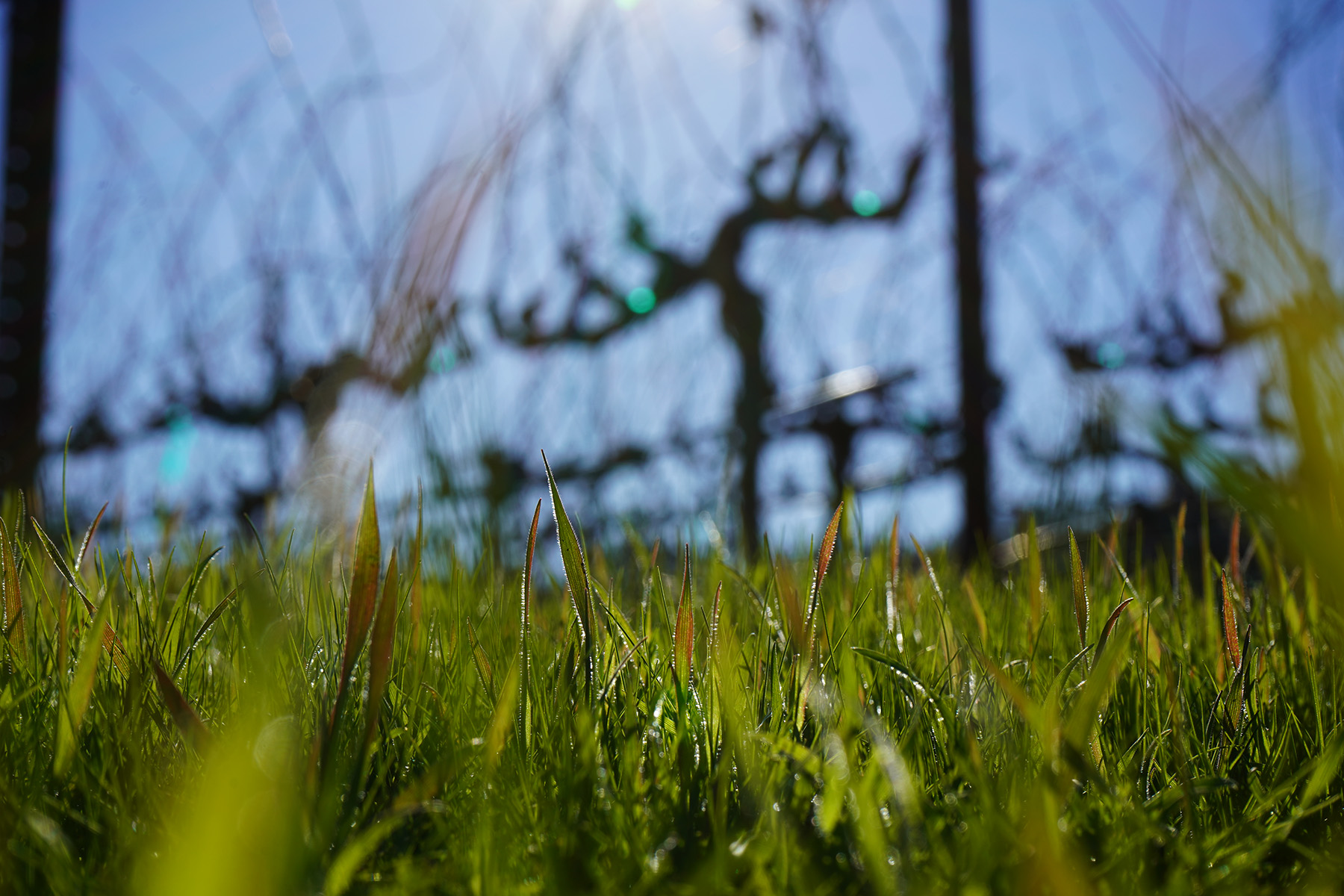 In between our rows of Zinfandel, like in much of the vineyard, soft green sprouts of grass are reaching upwards, bringing their bright freshness to the landscape.
In between our rows of Zinfandel, like in much of the vineyard, soft green sprouts of grass are reaching upwards, bringing their bright freshness to the landscape.
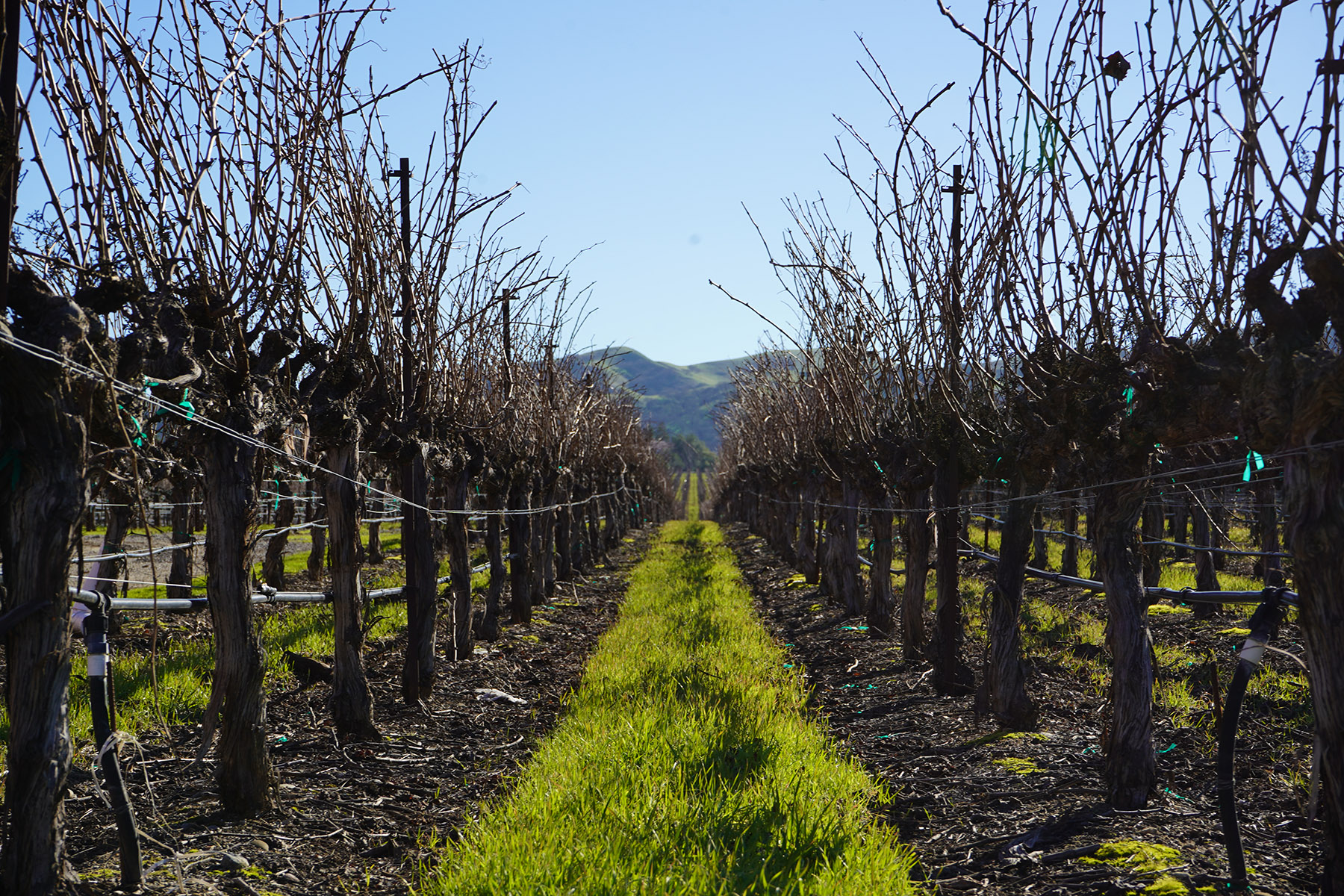 Though the leaves of last year are long gone and new growth is yet to come, these neat rows are nothing short of picturesque as the lines of green lead all the way to the gorgeous hills that frame our little valley.
Though the leaves of last year are long gone and new growth is yet to come, these neat rows are nothing short of picturesque as the lines of green lead all the way to the gorgeous hills that frame our little valley.
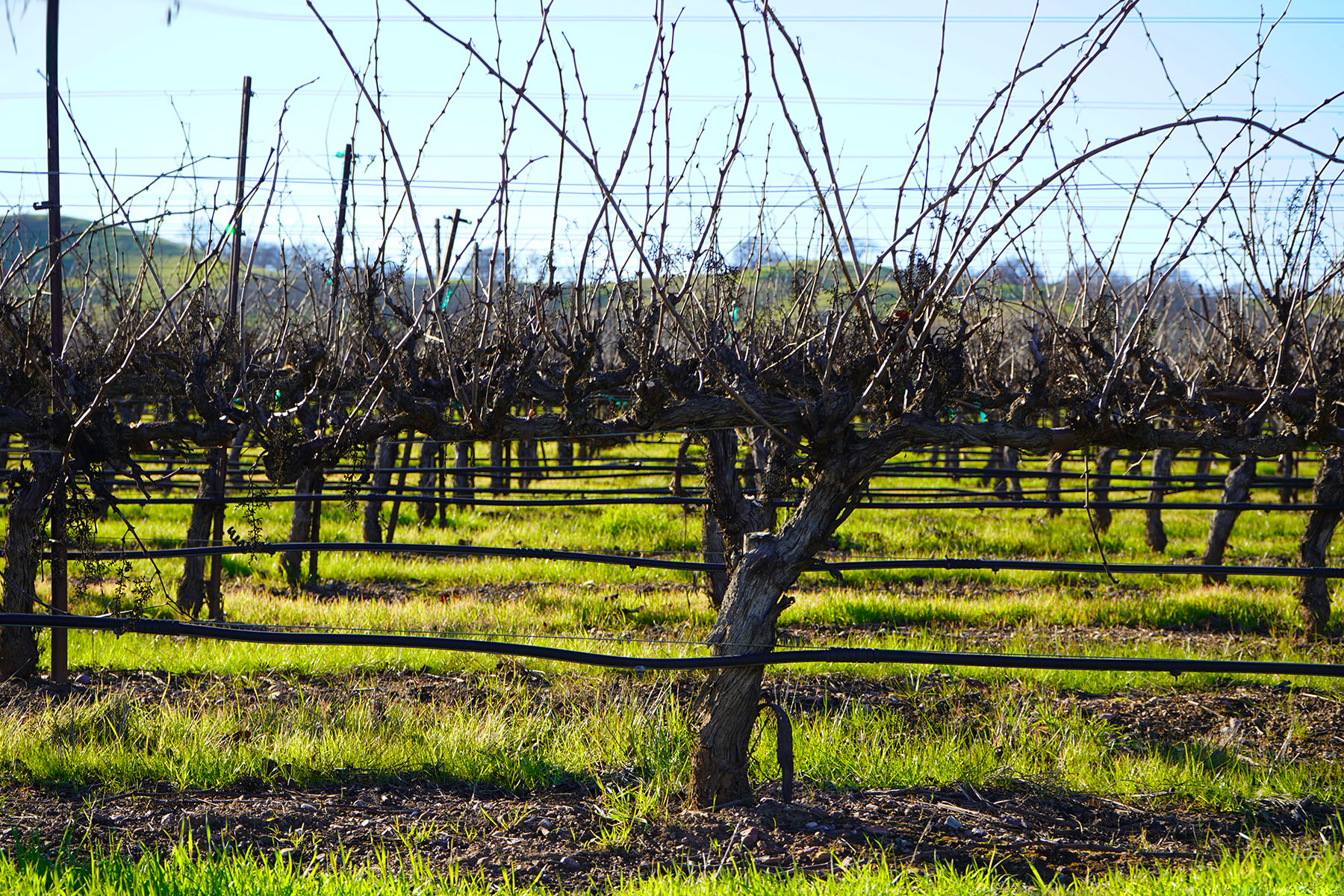 The tall, outstretched canes that formed the lush canopy of leaves now stand bare during our vines’ dormancy stage. These will be pruned before the budding stage this spring.
The tall, outstretched canes that formed the lush canopy of leaves now stand bare during our vines’ dormancy stage. These will be pruned before the budding stage this spring.
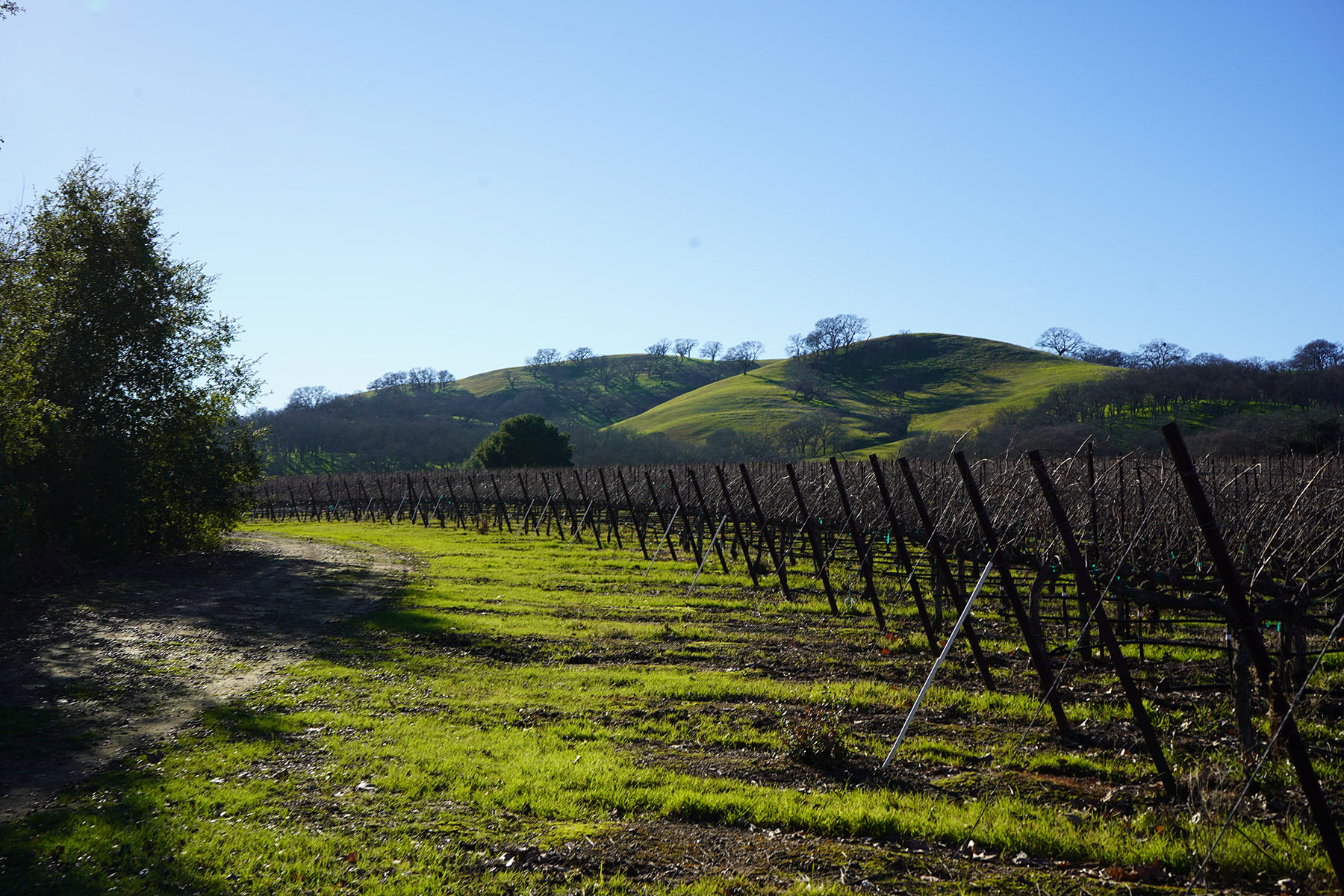 This picturesque curve of our Petit Verdot block reaches toward the highest elevation on our estate, nestled close to the hills.
This picturesque curve of our Petit Verdot block reaches toward the highest elevation on our estate, nestled close to the hills.
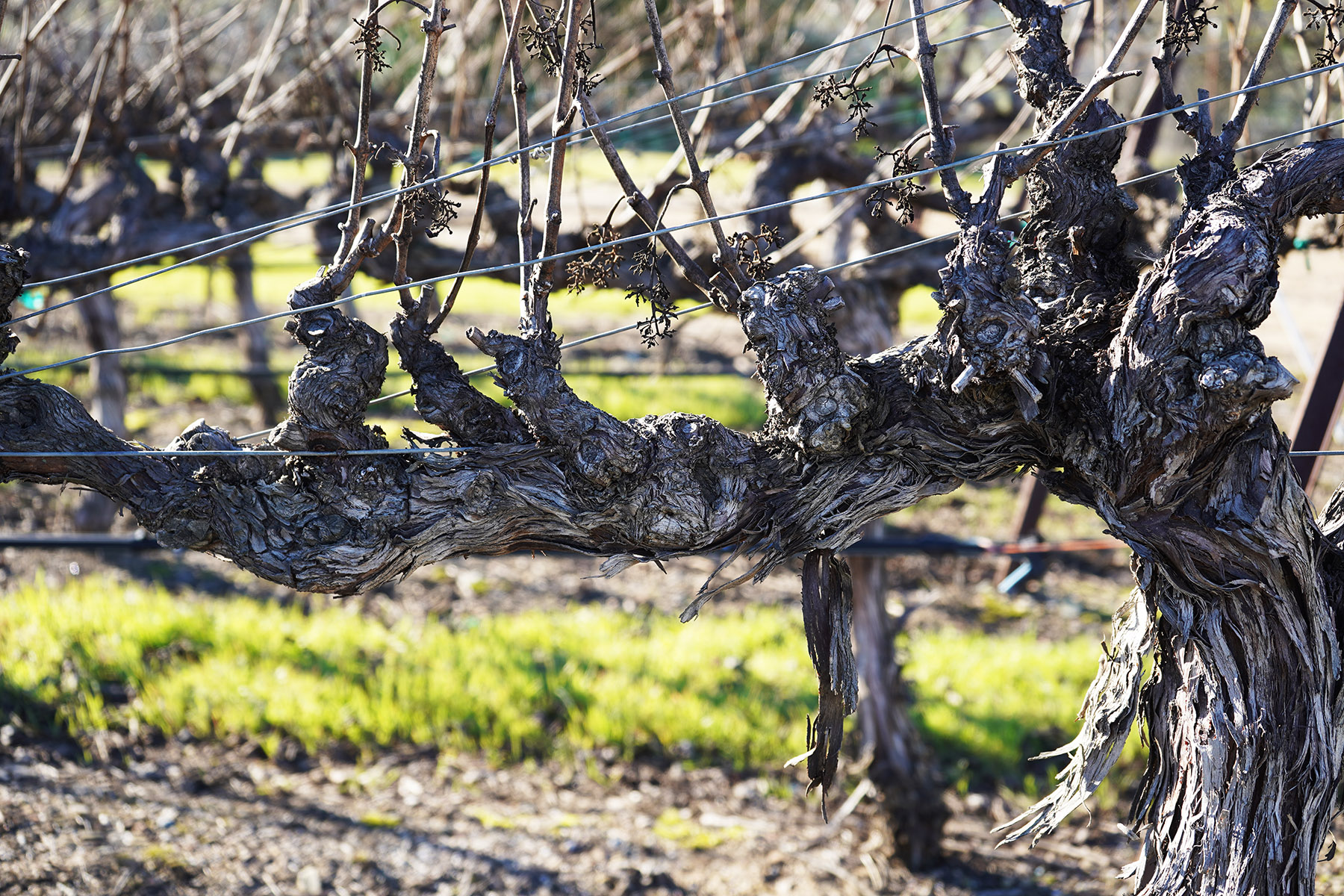 Each year as a vine grows, more layers, swirls, and gnarls form on the arms and trunk, showing a story and age and maturation. We love a gnarly vine like this beauty from our Cabernet vines.
Each year as a vine grows, more layers, swirls, and gnarls form on the arms and trunk, showing a story and age and maturation. We love a gnarly vine like this beauty from our Cabernet vines.
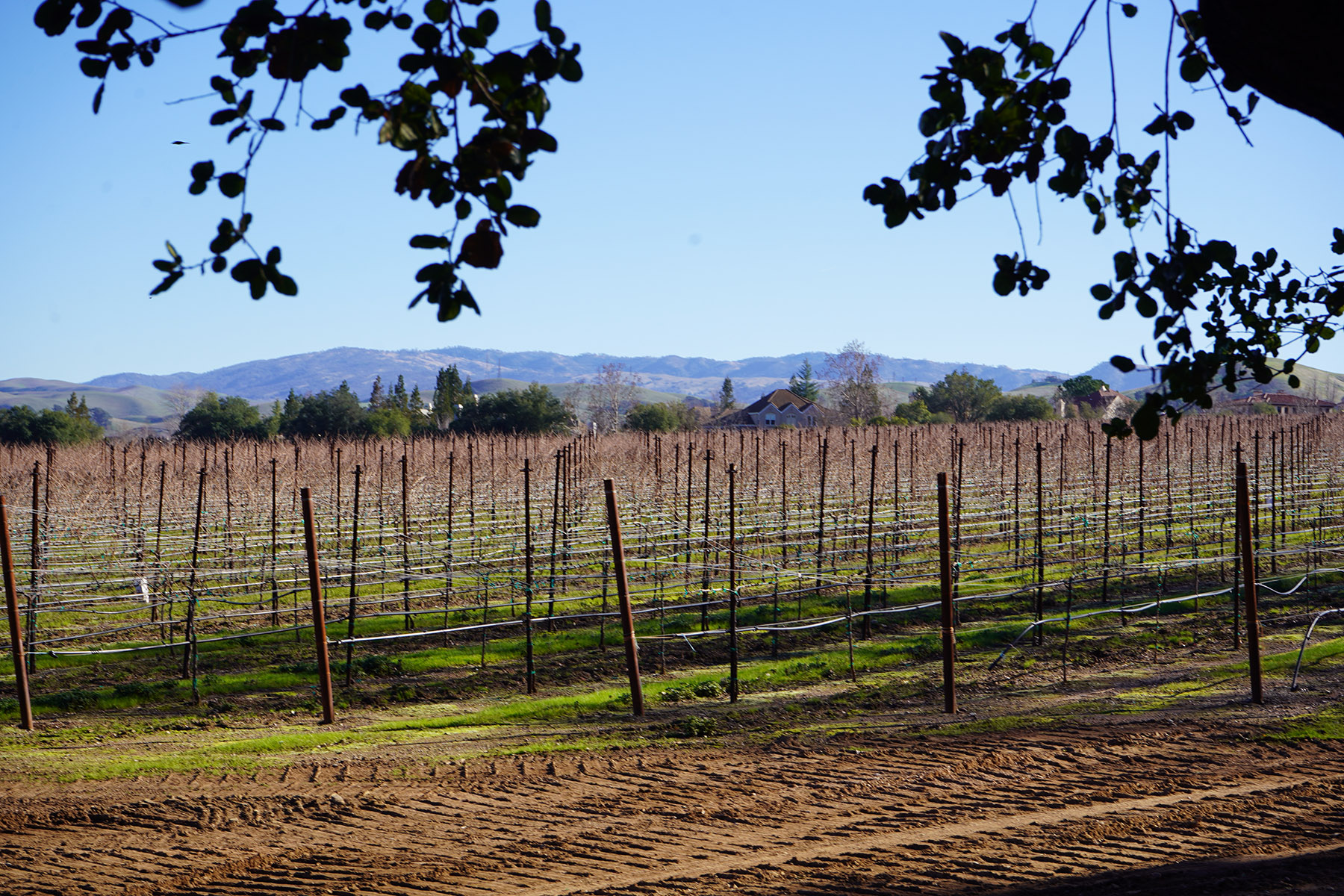 On the western edge of the vineyard, we have some Cabernet vines that are only a few years old, nestled near one of our Zinfandel blocks. They have weathered the storm well and show great promise for the year to come.
On the western edge of the vineyard, we have some Cabernet vines that are only a few years old, nestled near one of our Zinfandel blocks. They have weathered the storm well and show great promise for the year to come.
We are excited for this refreshed start to 2023! Come visit us in the beauty of the vineyard here at the Rubino Estates tasting room—or even take a tour right through the heart of the vineyard!
Pairing Soup and Wine
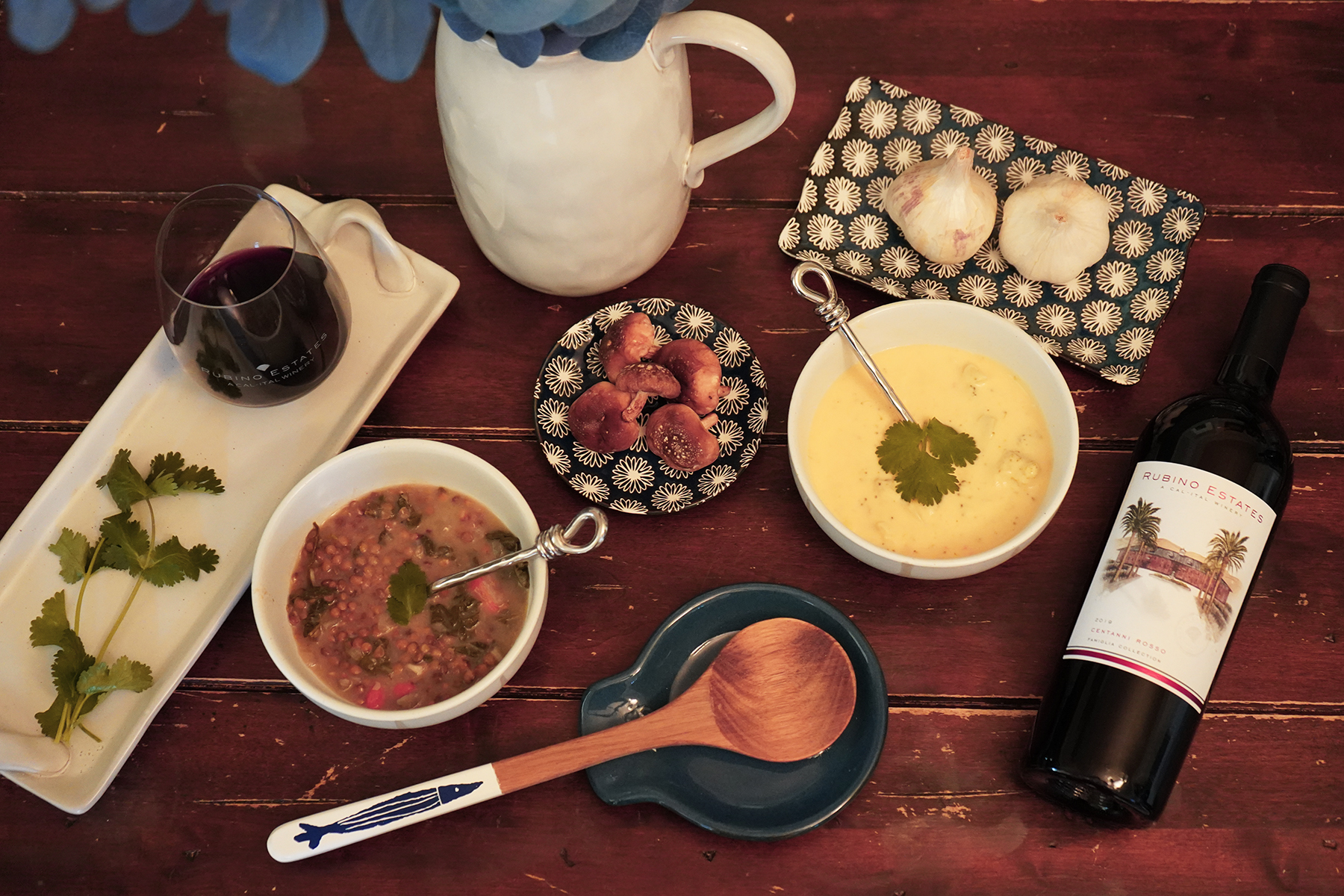
When it's cold, rainy, or altogether wintry outside, there’s nothing quite like a comforting bowl of soup. Whether it's one that brings back good memories or a new recipe you’d like to try, soups and stews offer heartiness in a diverse range of flavors and textures. If you’re wondering what wines might pair with these, don’t worry—it's easier than you think. Pairing wine and soup is just like pairing wine with other foods. A few helpful considerations, and of course flexibility, are key.
Consider the Texture
First, think of the mouthfeel of your soup, and try to find a wine that compliments it. If a broth is thick and creamy, consider an unctuous chardonnay like our Riserva Chardonnay. Heavier, fattier soups accommodate higher-acid wines. For meaty soups, especially those that have delicious flavor complexity from long hours of simmering, go with a similarly complex red blend like our Landmark Founder’s Blend.
Build Flavor Bridges
Just as with any other kind of wine pairing, common flavors are a great foundation. Soups with warm spices like nutmeg or cardamom do well with oak-influenced reds, such as our Ferrario or our Night Owl Barbera. We also love to play with sweeter ingredients like butternut squash to pair with the freshness of our Fumé Blanc. Herb flavors go well with deeper, mature reds. Try something from our library collection! Deep tannic reds like Cabernet Sauvignon and Petite Sirah stand up to cheesy soups. Soups with saltier meats like a split pea with ham make a delightful pairing for an approachable Bordeaux-style blend like our Cuvée Dray.
Enjoy Flexibility
The most important part of any pairing is to find the flavors and textures you like. There are no hard and fast rules to enjoying food and wine. We invite you to join in the age-old tradition of enjoying these things together and seeking out your favorite pairings. The medley of flavors in a bowl of soup offers more opportunities for flavor harmony than conflict, so enjoy flexibility as you get cozy!
We hope you are staying warm and enjoying winter to the fullest. Salute!
Your Wine Tasting Dictionary
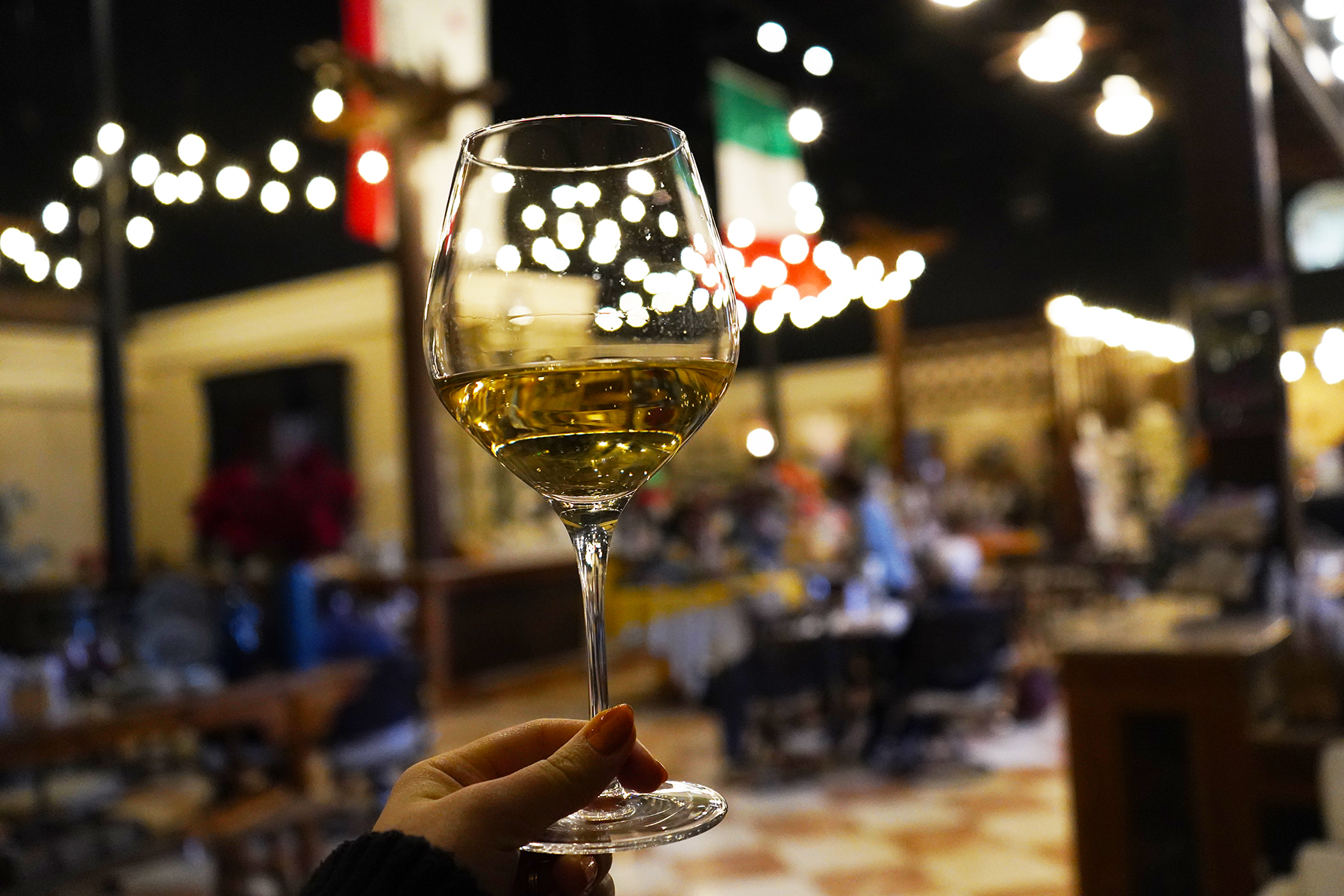 What are your goals for 2023? One task we like to put our mind to is learning something new every day. For us, of course, there’s no better topic than wine so that’s the subject we’re studying now! This week on the blog, we’ve put together a miniature dictionary of vernacular and slang from the wine world so you can put words to the wines you are sipping!
What are your goals for 2023? One task we like to put our mind to is learning something new every day. For us, of course, there’s no better topic than wine so that’s the subject we’re studying now! This week on the blog, we’ve put together a miniature dictionary of vernacular and slang from the wine world so you can put words to the wines you are sipping!
astringent (adj.) A description of the feeling of wine in the mouth. An astringent wine will cause your mouth to pucker.
appellation (n.) A specific wine-producing region. The appellation of the wine specifies that the wine came from a specific vineyard or area. In the wine world, appellations are legally defined, though the exact regulations vary from country to country. The world’s smallest appellation is in France, covering only 8.5 acres.
bouquet (n.) Similar to “nose” or “aroma” this term applies specifically to the complex interplay of scents unique to aged wines, so it’s generally not used to describe white wines or young red wines.
body (n.) Description of how “big” or heavy the wine feels in the mouth, usually described as full, medium, or light.
Brettanomyces (n.) Casually referred to as “brett,” this bacteria is a yeast that produces barnyard, mousy, or metallic scents in wine. Some red wines have an intentional touch of Brettanomyces at very low concentrations as it can lend a spicy, leathery note.
cuvaison (n.) a French term referring to the process by which wine gains color, flavor, and tannins by leaving the juice in contact with the grape skins and pips during fermentation. The English equivalent is “maceration.”
cuvée (n.) Wine that is a blend of multiple varietals. For example, our Cuvée Dray is a blend of Cabernet, Merlot, and Petit Verdot. Cuvée is also a description used to describe certain French sparkling wines.
dry (adj.) Having little to no sweetness. Dryness corresponds to the level of residual sugar, and may also be emphasized in wines with a higher alcohol content.
earthy (adj.) Containing notes that are reminiscent of soil or other such aromas. The opposite of earthy is fruit-forward.
flabby (adj.) Having little acidity and therefore no structure—a negative term. Flabby may also describe sparkling wines that have gone “flat” and lost effervescence.
forward (adj.) A wine that stands out from its peers. A forward wine has matured early, has prominent fruit, and is in peak condition. Referring to a wine as “closed” means it is not forward.
hollow (adj.) Having flavor sensations at the beginning and finish, but lacking in the middle. Usually, hollow wines fall short due to a lack of fruitiness.
legs (n.) the streaks of wine on the inside of the glass after swirling.
magnum (n.) A large bottle of wine which holds 1.5 liters, the equivalent of two normal 750ml bottles. A word you hear often around Rubino Estates Winery, We affectionately call them “mags” and admire the unique properties of wine aged in them.
malolactic (adj.) A scientific term describing a type of secondary fermentation used in some winemaking processes. Some wine aficionados will identify that “buttery” or “creamy” wines have gone through “malo.”
mid palate (n.) The “middle flavor” of wine, right between the first hit on the tongue and the finish after you swallow.
nose (n.) The first impression made through the wine’s aroma. Smelling your wine is referred to as “nosing” in some circles.
oak or oaky (adj.) Referring to a family of flavors infused into wine by the oak barrels used for aging, including vanilla, s’mores, butterscotch, and toast.
oenology (n.) The science of wine and winemaking, alternately spelled “enology”
plonk (adj. or n.) Chiefly British, refers to cheap or inferior wine, often produced in bulk.
punt (n.) The dimple on the bottom of a wine bottle.
quaffing (adj.) Simple, everyday drinking wine. Quaffing wines are not overly sophisticated, but pleasant and drinkable. The related word “quaff” which means to drink heartily.
silky (adj.) Feeling soft in the mouth, generally with mild levels of acid and tannins.
tartaric (adj.) A type of acid that occurs naturally in many fruits and is the principal acid in grapes. It promotes flavor and aging in wine and maintains the stability of the wine’s composition and color.
texture (n.) A tactile factor of wine usually described by how a wine feels in the mouth. Words like smooth, velvety, crisp, or steely are all textural descriptors. (see also: mouthfeel)
typicity (n.) How representative a wine is of its particular varietal. Different grape varietals have characteristic aromas and flavors, so this term would tell you, for example, how much a Barbera “tastes like a Barbera.”
unctuous (adj.) Particularly weighty and rich or having a pleasantly full viscosity—a positive descriptor.
vinification (n.) From start to finish, the process of making wine. This term covers everything from planting to bottling and cellaring. Another word for winemaking.
vintage (n.) An indication of the year a wine’s grapes were harvested, usually stated before the varietal, such as “2018 Sangiovese.”
wine tasting (n. or v.) An enjoyable experience of evaluating wine with all the senses, engaging scents, sights, textures, flavors and more.
young (adj.) A wine that has not had a great deal of time to mature. Many wines are pleasant while young, though some need longer periods to age.
This handy list of wine tasting vocabulary might just be the tool you didn’t know you needed. Come by the tasting room to see if you can spot any of these descriptions in the wines you enjoy—and impress your friends with your skill!